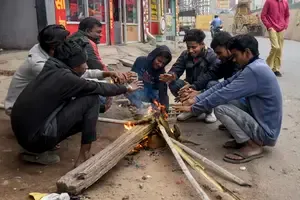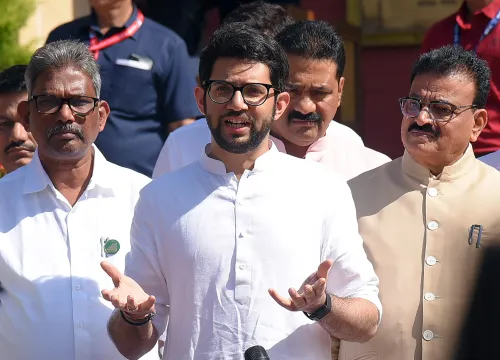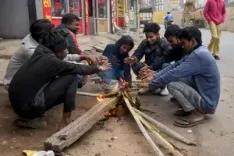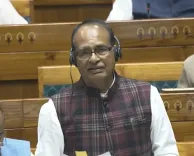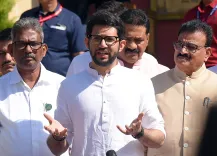Government Unveils Initiatives to Accelerate R&D in Steel Industry

Synopsis
Key Takeaways
- Three new R&D schemes launched by SRTMI.
- SteelCollab platform connects industry and academia.
- Focus on decarbonization and digitalization.
- India's steel demand expected to rise significantly.
- Collaboration between startups and established industry players encouraged.
New Delhi, March 12 (NationPress) The Steel Research Technology Mission of India (SRTMI), a collaborative initiative between the Indian steel sector and academic institutions, backed by the Ministry of Steel, unveiled three innovative R&D schemes and a dedicated web portal during the event titled “Catalyzing R&D in the Indian Steel Sector” held at Vigyan Bhawan on Wednesday.
The event attracted participation from prominent steel manufacturers including SAIL, along with leading academic institutions such as IIT Kanpur, IIT Bombay, IIT Kharagpur, IIT Delhi, IIT Madras, and ISM Dhanbad, as well as various research startups.
International organizations like the Swedish Energy Agency and the Asian Development Bank were also present at the event.
Minister of State for Steel & Heavy Industries, Bhupathiraju Srinivasa Varma, officially launched the R&D schemes and the SRTMI web portal, highlighting their significance in promoting innovation and sustainability within the steel industry.
The minister emphasized that these new R&D initiatives and the SteelCollab platform are pivotal as India aims for a steel capacity of 300 million tonnes by 2030. He underscored the necessity of expediting technology commercialization and indigenizing the manufacturing of capital goods. Additionally, he mentioned that the SRTMI web portal will enhance collaboration, idea exchange, and engagement across the industry.
The three newly launched schemes include the challenge method aimed at addressing critical industry-wide challenges of national significance, the open innovation method which supports open research proposals from academia and researchers in collaboration with industry, and the startup accelerator that aids early-stage startups in developing innovative steel technologies.
The SteelCollab platform will serve as a matchmaking hub, connecting industry leaders, researchers, startups, and academic institutions to promote decarbonization, digitalization, and advanced steel development. Solution seekers from the steel industry can present their challenges, while researchers and startups can showcase their innovative ideas on this platform.
Sandeep Poundrik, Secretary of the Ministry of Steel, pointed out India's rise as a global steel demand hub, forecasting that per capita consumption will increase from 100 kg to 158 kg by 2030. He also highlighted key challenges such as plant efficiency, AI/ML integration, digitization, and decarbonization, emphasizing the need for research tailored to India's distinct industry landscape, where 45 percent of capacity resides in the secondary steel sector.
SAIL chairman Amarendu Prakash stressed the importance of collaboration between industry and academia to bolster India's competitiveness in the global steel market. He reported India's 11 percent growth in steel demand, significantly surpassing the global average of 0.5 percent, and highlighted the crucial role of R&D schemes in facilitating joint research.
A panel discussion themed “Forging Innovation through Industry-Academia Collaboration” emphasized the necessity for pilot testing facilities, university programs aligned with industry needs, and research priorities centered on green steel and decarbonization. The importance of startups in connecting academic research with industrial applications, particularly in digital technologies and beneficiation processes, was also highlighted.
A brainstorming session titled “Bridging the Gap Between Industry and Academia” featured 19 speakers from various sectors, including industry, academia, incubation centers, and startups, discussing opportunities for collaboration and research priorities across the steel value chain.


